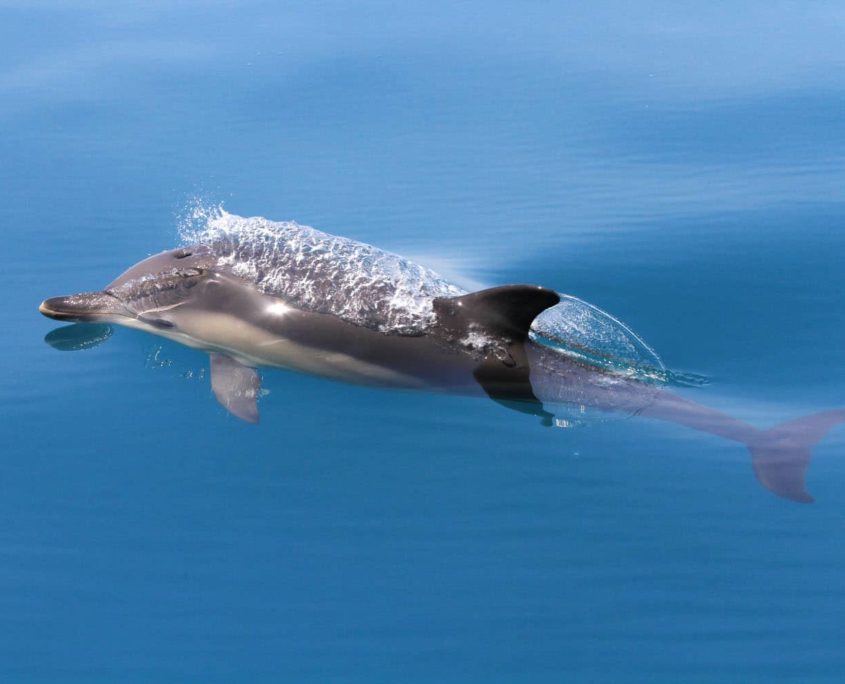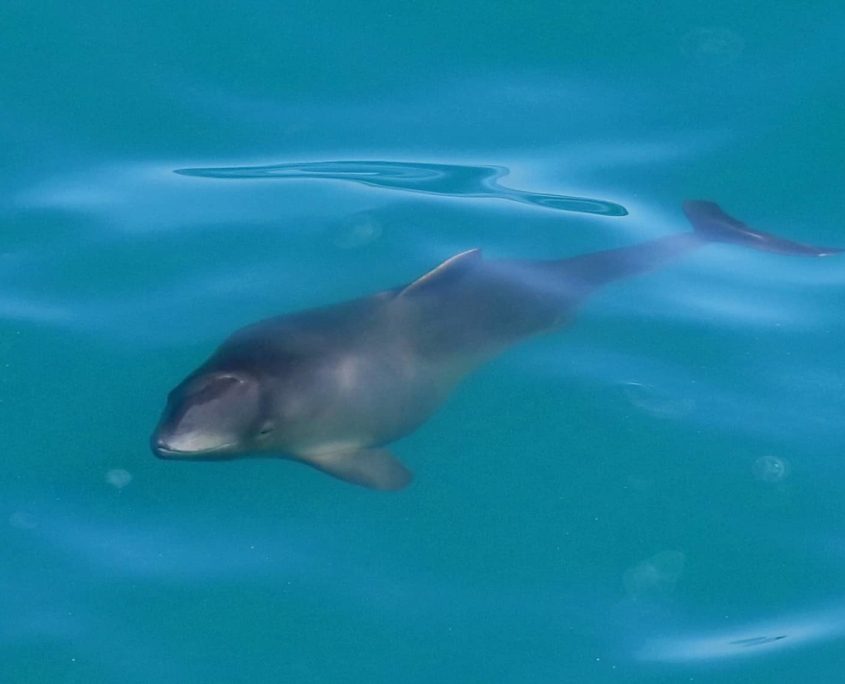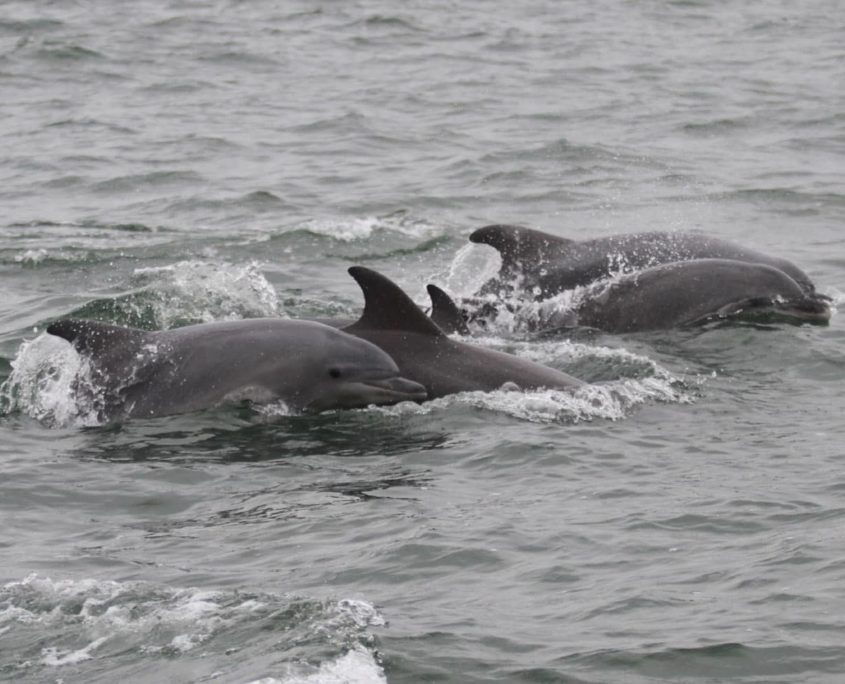
29 October 2021. On International Black Sea Action Day, 31 October, join us in celebrating Endangered Black Sea harbour porpoises and bottlenose dolphins as well as Vulnerable Black Sea common dolphins.
The habitats of these three Red-Listed species in 11 prime areas are today formally awarded Important Marine Mammal Area (IMMA) status by the International Union for Conservation of Nature (IUCN) Task Force on Marine Mammal Protected Areas. This announcement follows a week-long workshop earlier this year drawing on decades of scientific work in the region and an intensive peer review process over the past several months.
The region’s marine scientists and conservation organizations are hoping that the 11 new IMMAs will help put these habitats into the spotlight. IMMAs are not protected areas but they are intended to assist with national and global programmes to help countries select high biodiversity areas to fulfil the targets of 30 percent protection by 2030 (“30 by 30”) as supported by many international bodies and more than 100 countries around the world. Romania is the only Black Sea country to take part so far.
“The Black Sea has only a few small protected areas in coastal waters,” says Mr. Marian Paiu, Ecology & Marine Mammal expert with Mare Nostrum in Romania. “Besides Vama Veche and the Danube Delta in Romania, the existing MPAs include the Kaliakra Cape in Bulgaria, Kolcheti in Georgia, and the Chornomorsky Biosphere Reserve in Ukraine. But vulnerable open sea habitats, as well as highly exploited port and resort areas, are left out of protection.”
“Both of our dolphin species and our Black Sea porpoise are in urgent need of habitat protection,” says Dr. Pavel Goldin, leading researcher from the Department of Evolutionary Morphology, Schmalhausen Institute of Zoology, in the Ukraine. “We’re losing them mainly to bycatch, the incidental mortality in fishing nets. The annual death toll for Black Sea harbour porpoises alone is 11,000 to 20,000 individuals. If that rate continues, they will soon go extinct.”
Particularly acute is the issue of protecting natural migration corridors such as the Kerch Strait which connects the northern Black Sea to the Sea of Azov. A small population of harbour porpoises, known for its distinct morphotype, lives in the Sea of Azov in summer and migrates through this strait.
“Harbour porpoises have been the most heavily exploited,” says Goldin, “and they are the last to gain protection. It’s time we paid attention.”

Background and Notes
- The 11 new IMMAs are part of a tranche of 14 new IMMAs for the marine mammals of the Black Sea, Turkish Straits and Caspian Sea, which were considered together by different experts at the IMMA online regional workshop organized in March 2021 by the IUCN SSC-WCPA Marine Mammal Protected Areas Task Force. The workshop resulted in the identification of 23 new candidate Important Marine Mammal Areas (cIMMAs). Following independent review, 14 IMMAs, one candidate IMMA (cIMMA) and 11 areas of interest (AoI) were approved and are now displayed on the IMMA e-Atlas. The e-Atlas shows the global network of IMMAs and AoI and a searchable database.
- The two dolphin and one porpoise species in the Black Sea are locally distributed subspecies. All three are genetically distinct from non-Black Sea populations. The population of the harbour porpoise is isolated from their closest counterparts in the Atlantic by a several thousand kilometer distance.
- The most dangerous common threat for all the Black Sea cetaceans is bycatch, mainly by getting trapped or entangled in fishing nets and suffocating when they are unable to surface to breathe. Others get lines or pieces of nets caught around their flippers or flukes; they sometimes drag fishing gear around for years—a slow death. Bycatch is particularly a problem for the harbour porpoise: bycatch deaths in the Black Sea reach 11,000-20,000 animals a year which far exceeds any threshold for a sustainable status. This is compounded by the lasting effects of past extensive hunting which ceased in the Black Sea only by 1983.
- Another common threat is the habitat degradation due to a complex process of depletion of prey fish stocks, marine pollution, eutrophication (including sewage) and bioinvasions by alien species which undermine the stability of ecosystems. An incidentally introduced ctenophore Mnemiopsis leidyi caused a disaster in the Black Sea ecosystem in the 1980s, depleting pelagic fish stocks, which then led to cetacean population declines.
- On 31st October 2021, International Black Sea Action Day, the Black Sea countries of Bulgaria, Georgia, Romania, the Russian Federation, Turkey and Ukraine, mark the 25th anniversary of the adoption of the Black Sea Strategic Action Plan following the signing of the Convention on the Protection of the Black Sea Against Pollution — the Bucharest Convention. The Black Sea Strategic Action Plan recognises that collective action is required from all Black Sea countries to reduce the impacts of pollution on the Black Sea ecosystem. International Black Sea Action Day is a regional activity designed to raise public awareness of the need for regional cooperation to protect the Black Sea ecosystem. (For background information: http://www.bsad.bsnn.org/home.htm).
- The new Black Sea IMMAs also mark the completion of the entire Mediterranean and Black Sea region. The Mediterranean IMMA work was completed in 2017. The conservation of the marine mammals of the Mediterranean and Black Seas is under the ACCOBAMSAgreement which has its 25th anniversary 24th November 2021. The ACCOBAMS Scientific Committee, under the direction of the country parties throughout the region, participated in the IMMA workshops and contributed substantial information on cetaceans through the long-term research by the region’s scientists.
* Agreement on the Conservation of Cetaceans of the Black Sea, Mediterranean Sea and Contiguous Atlantic Area - The workshop was organised by the Task Force with support from GOBI funded by the German government’s International Climate Initiative (IKI), and the Tethys Research Institute, through a contribution from the MAVA Foundation. Administrative tasks were performed largely by Tethys Research Institute with help from Whale and Dolphin Conservation.
- The final report of the Seventh IMMA Workshop: Important Marine Mammal Area Regional Workshop for the Black Sea, Turkish Straits System and Caspian Sea from the IUCN Marine Mammal Protected Areas Task Force is now available for download from the IMMA website, along with maps and IMMA background data.


 ©David Goodman
©David Goodman